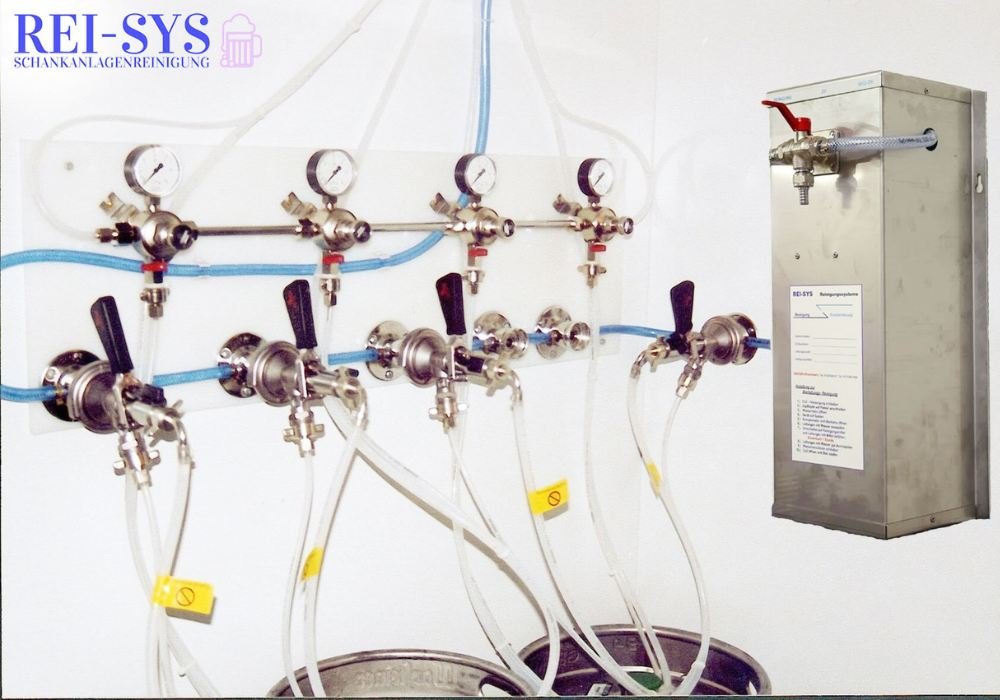Effective Wort Oxygenation

By Neva Parker, White Labs Yeast
 Oxygen is something that every brewer inevitably wants to minimize in his or her process, with one exception: wort oxygenation. In every other aspect of beer production, oxygen or air in the beer causes detrimental effects on beer flavor and stability, but the opposite is true prior to fermentation. That is because yeast depend on oxygen to provide them with the building blocks needed to synthesize fatty acids and sterols, essential components in the yeast cell membrane. Oxygen also contributes to the formation of hemoproteins, which help the cells protect themselves from oxidative stress, critical in a fermentation environment.
Oxygen is something that every brewer inevitably wants to minimize in his or her process, with one exception: wort oxygenation. In every other aspect of beer production, oxygen or air in the beer causes detrimental effects on beer flavor and stability, but the opposite is true prior to fermentation. That is because yeast depend on oxygen to provide them with the building blocks needed to synthesize fatty acids and sterols, essential components in the yeast cell membrane. Oxygen also contributes to the formation of hemoproteins, which help the cells protect themselves from oxidative stress, critical in a fermentation environment.
This concept is not particularly new to brewers. The main challenge over the years has not been the “what” of oxygenation but the “how.” As crucial a piece as this is, it is a much more difficult task to oxygenate wort properly and adequately. Most texts will recommend a standard dissolved oxygen rate of 8-10ppm (mg/L) in a moderate gravity wort (up to 12° Plato). The key here is understanding that we’re talking about dissolved oxygen and the oxygen dissolution rate in wort can be dependent on a number of factors including temperature of the wort, gravity of the wort, and size of the bubbles (yes, that’s real!). When deciding how to go about this sometimes daunting task, here are a few rules of thumb to consider:
Air vs. Oxygen
Although there is absolutely nothing wrong with using air (or shaking, splashing or other manner of physical air delivery), from an efficiency standpoint, it is not my preferred method. When you consider that air is 21% oxygen, you have undoubtedly lost a bit of your dissolution rate. In this case, the maximum solubility is only around 9.5ppm and even then, back-pressure is usually needed to keep oxygen in solution. When working with pure oxygen, your maximum potential dissolved oxygen jumps to 40ppm (saturation), not that you would want to be there as too much of a good thing is not good. Other factors keep DO levels from landing at saturation, such as the temperature and gravity as mentioned before, as well as the flow rate and time of oxygenation.
Delivery Systems
In most oxygen delivery systems, there is a tank with the proper regulators that measure the flow rate, generally anywhere from 6-10L/minute. In delivering the oxygen itself, I recommend using an oxygen stone or something similar, which will introduce an effective stream of micro-oxygenation into the wort . Smaller bubbles offer much more dissolution than larger bubbles, because of the larger surface area provided by millions of tiny bubbles as opposed to one large one. The system itself should be directly injected inline when wort is being transferred to fermenters in order to achieve the best solubility. You will also want to place your oxygen injection a fair distance from your actual fermentor, especially if you use a dissolved oxygen meter to measure your oxygen levels.
Measurement – Dissolved Oxygen Meters
Any delivery system can be the most high tech, but still not get you the optimal oxygen levels. The only way to ensure this happens is by using a reliable dissolved oxygen meter, and because there are many on the market, it can be difficult to choose one. The things to look for in a good DO meter are:
- Measuring range of ppm, not ppb, which is what is used with packaged beer
- Easy to maintain probe. The newer optical probes have the least maintenance and longest durability.
- Easy calibrations and reliable measurements. Since oxygen measurements are sensitive, instrumentation needs to be calibrated often to provide the most accurate measurements.
- Fast response time. No one has time to wait for the meter to stabilize its reading? We need to make decisions on our DO now!
You will also want to decide if you want to work with a portable meter or one that is inline. Both are reliable, and the portable meters will be slightly less expensive but have to be calibrated more often. Additionally, with any meter you do choose, you will want to take your measurement close to the fermentor and a good distance downstream from the oxygen tank. Since the oxygen generally comes into the system at a somewhat high pressure, it takes some time for the solubility to stabilize and give you a reliable reading.
Many other factors can come into play when on the topic of wort oxygenation, and the matter can get somewhat complicated. In these cases, I find it best to start with the basics and get that right. From there it is a simple matter maintaining consistency of method and asking the appropriate “how” when things change.



